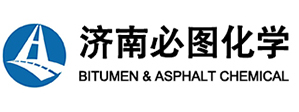- mike@bitumenchem.com
- +86 15066607710
- Tongfa Avenue, Changqing District,Jinan
Location: Home > News & Trends > Industry News
In modified bitumen, the effects of plastomers and elastomers on its performance are mainly reflected in the following aspects:
1. Stiffness and deformability: Plastomers usually have higher stiffness and can provide better compressive strength and stability, while elastomers have better deformability and can return to their original shape when subjected to force. This means that plastomers modified bitumen may show better resistance to deformation under high temperature or heavy load conditions, while elastomer modified bitumen shows better toughness and crack resistance under temperature changes and dynamic loads.
2. Impact strength: Elastomers usually have higher impact strength, which makes modified bitumen better resistant to damage when facing sudden loads or impacts. Plastomers are relatively weak in this regard and may crack or break under high impact conditions.
3. Temperature sensitivity: Plastomers and elastomers also behave differently under temperature changes. Plastomers may soften at high temperatures, while elastomers can maintain a certain degree of elasticity and toughness. This characteristic makes elastomer modified bitumen more advantageous in environments with large temperature changes. These performance differences directly affect the application effect of modified bitumen in actual engineering. Therefore, choosing the appropriate polymer type according to specific engineering needs is crucial for optimizing the performance of modified bitumen.
- Is the preparation method of SBS modified bitumen
- Can we predict the performance and stability of mo
- Advantages and Disadvantages of Segregation Test t
- BAC:Lower cost and higher reliability
- In the production process of rubber bitumen, the c
- What are the conditions that affect the epoxidatio
- What are the performance characteristics of modifi
- Why is excessive coupling agent the main cause of







